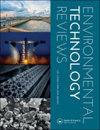微生物合成纳米颗粒及其在环境净化中的应用
Q1 Environmental Science
引用次数: 6
摘要
摘要快速的城市化和工业的发展导致各种废物和危险化学品不断添加到环境中,从而对环境造成了超出限度的污染。这是一个全球关注的问题,因为制定有效的补救方法已成为一项挑战。传统的污染物去除方法在成本和二次污染物产生方面存在严重缺陷,因此创新简单环保的方法成为当务之急。正在探索消除不同污染物的新技术,其中纳米技术显示出巨大的潜力。利用不同的微生物合成生物纳米颗粒,并进一步用于环境污染物的修复。亚甲蓝在11内完全降解 在最近的一项研究中,使用海洋芽孢杆菌的无细胞提取物合成的金纳米颗粒在20分钟后完成了刚果红的98%降解。使用洛氏谢瓦氏菌PV-4和粪肠球菌合成的钯纳米颗粒促进了有毒六价铬的完全还原。本文综述了微生物介导的纳米材料合成及其在环境修复领域的应用前景。图形摘要本文章由计算机程序翻译,如有差异,请以英文原文为准。
Microbially synthesized nanoparticles and their applications in environmental clean-up
ABSTRACT Rapid urbanization and development of industries have led to the continuous addition of various wastes and hazardous chemicals into the environment, thus polluting it beyond limits. It is an issue of global concern as coming up with effective methods for remediation has become a challenge. The traditional methods for pollutant removal face serious drawbacks in terms of cost and generation of secondary pollutants, thus innovating simple and environment-friendly approaches becomes a priority. New technologies are being explored for the eradication of different contaminants, of which nanotechnology has shown immense potential. Biogenic nanoparticles are synthesized using different microbes and are further employed for the remediation of environmental pollutants. Complete degradation of Methylene Blue within 11 min and 98% degradation of Congo Red after 20 min were accomplished using gold nanoparticles, synthesized using cell-free extracts of Bacillus marisflavi in a recent study. Palladium nanoparticles, synthesized using Shewanella loihica PV-4 and Enterococcus faecalis, facilitated the complete reduction of toxic hexavalent chromium. This review focuses on microbe-mediated synthesis of nanomaterials and their prospect in the field of environmental remediation. GRAPHICAL ABSTRACT
求助全文
通过发布文献求助,成功后即可免费获取论文全文。
去求助
来源期刊

Environmental Technology Reviews
Environmental Science-Water Science and Technology
CiteScore
6.90
自引率
0.00%
发文量
8
 求助内容:
求助内容: 应助结果提醒方式:
应助结果提醒方式:


